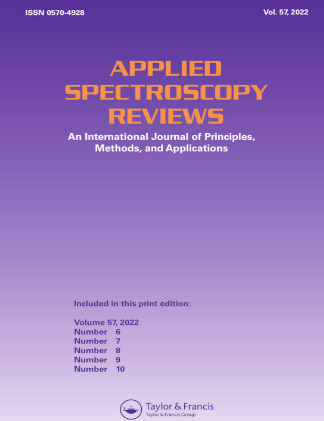Mathematical techniques to remove moisture effects from visible–near-infrared–shortwave-infrared soil spectra—review
IF 5.4
2区 化学
Q1 INSTRUMENTS & INSTRUMENTATION
引用次数: 6
Abstract
Abstract Visible–near-infrared–shortwave-infrared (VNIR–SWIR) spectroscopy is one of the most promising sensing techniques to meet ever-growing demands for soil information and data. To ensure the successful application of this technique in the field, efficient methods for tackling detrimental moisture effects on soil spectra are critical. In this paper, mathematical techniques for reducing or removing the effects of soil moisture content (SMC) from spectra are reviewed. The reviewed techniques encompass the most common spectral pre-processing and algorithms, as well as less frequently reported methods including approaches within the remote sensing domain. Examples of studies describing their effectiveness in the search for calibration model improvement are provided. Moreover, the advantages and disadvantages of the different techniques are summarized. Future research including further studies on a wider range of soil types, in-field conditions, and systematic experiments considering several SMC levels to enable the definition of threshold values for the effectiveness of the discussed methods is recommended.从可见-近红外-短波-红外土壤光谱中去除水分影响的数学技术
可见-近红外-短波红外(VNIR-SWIR)光谱技术是满足日益增长的土壤信息和数据需求的最有前途的传感技术之一。为了确保该技术在野外的成功应用,有效地解决水分对土壤光谱的不利影响至关重要。本文综述了降低或消除土壤含水量对光谱影响的数学方法。回顾的技术包括最常见的光谱预处理和算法,以及较少报道的方法,包括遥感领域的方法。提供了研究实例,描述了它们在寻找校准模型改进方面的有效性。此外,还总结了不同技术的优缺点。建议未来的研究包括对更广泛的土壤类型、田间条件的进一步研究,以及考虑几个SMC水平的系统实验,以确定所讨论方法有效性的阈值。
本文章由计算机程序翻译,如有差异,请以英文原文为准。
求助全文
约1分钟内获得全文
求助全文
来源期刊

Applied Spectroscopy Reviews
工程技术-光谱学
CiteScore
13.80
自引率
1.60%
发文量
23
审稿时长
1 months
期刊介绍:
Applied Spectroscopy Reviews provides the latest information on the principles, methods, and applications of all the diverse branches of spectroscopy, from X-ray, infrared, Raman, atomic absorption, and ESR to microwave, mass, NQR, NMR, and ICP. This international, single-source journal presents discussions that relate physical concepts to chemical applications for chemists, physicists, and other scientists using spectroscopic techniques.
 求助内容:
求助内容: 应助结果提醒方式:
应助结果提醒方式:


